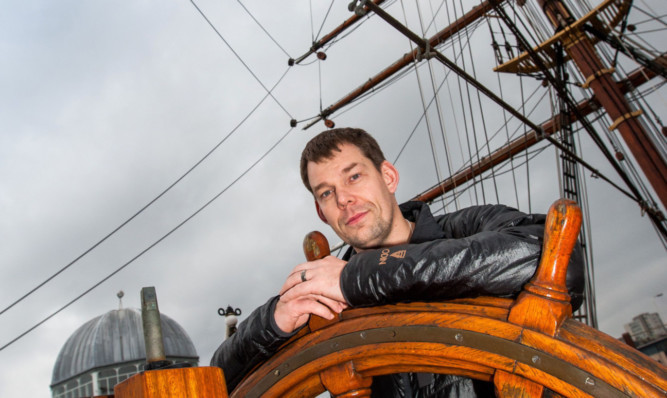Dundee’s polar exploration past was given a boost yesterday by the arrival of a real polar explorer.
Duncan Slater was part of the Walking With the Wounded UK team that pushed to the South Pole with Prince Harry last year during the worst weather at the pole in 70 years.
He gave the keynote speech at a fundraising dinner for Dundee Heritage Trust at Discovery Point.
In July 2009 an improvised explosive device hit Duncan’s vehicle in Babaji, Afghanistan and he ultimately lost both of his legs below the knee.
Discussing the epic walk, he said: “It became a bit of a cure for me. I thought if I can do this I can replace those bad experiences with a positive one.
“It has been very therapeutic for me and a lot of the other guys as well.
“After I got back I can think about this … Instead of thinking about being blown up I can think about skiing to the pole. It’s really given me a new outlook.”
Duncan was the first of the team to reach the South Pole.
He said: “It’s a strange old place. Imagine a sea, with the waves frozen, and the sky is blue and the ground is white, and they meet and there’s nothing else to look at.
“We stopped on our final night about six miles short of the pole, knowing we’d reach it the next day, and on the horizon you could see the huge weather station at the pole, because everything else is so flat, and we could just aim for that.
“The morning we got to the pole, I set off trailing an American guy named Ivan, who was blind and had to ski behind the sledge with a harness so he could feel if we were going up or down or left or right.
“On the pole, you just ski all day, and put your iPod in and don’t really think, and we’d set off at a hell of a pace, and one of the guides asked me to stop because the rest of the team was half an hour behind.
“Ivan said ‘did you hear that? The blind guy and the guy with no legs are winning!’ and we decided to leg it for the pole, and we got there first.”
Before giving his speech at the Discovery Point dinner, Duncan joined Shackleton and Scott as Antarctic explorers who have boarded RRS Discovery, and looked round the museum.
He said: “I did loads of reading into the kit, saw all the pictures of those great explorers. We had modern, top of the range kit and things still broke, things still froze up, people got frostbite and injuries.
“The kit has changed but the one constant is Antarctica, it’s never changed.”
